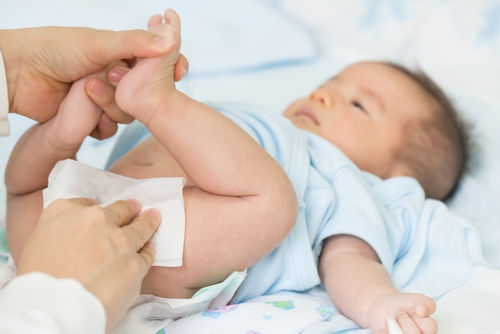Pilot Newborn Screening for Sanfilippo Type A, B Launches in New York
Written by |

The U.S.’ largest pilot newborn screening program for multiple disorders, including Sanfilippo syndrome type A and type B, has launched across eight hospitals in New York.
The new screening test — called ScreenPlus – will expand the current newborn testing program to include 14 additional disorders not currently on New York state’s routine infant screening panel.
The test is performed using a drop of dried blood. The blood is collected by pricking an infant’s heel within the first 48 hours of birth, a standard procedure in hospitals. No additional blood sample collection is necessary.
Those interested can fill out the ScreenPlus inquiry form here. More information is available by email at [email protected] or by phone at 718-741-2323.
“This pilot program will provide critical information about whether these screening methods can be added to routine newborn-screening panels nationwide,” Cara O’Neill, MD, chief science officer at the Cure Sanfilippo Foundation, said in a press release.
“This pilot could result in all children nationwide being screened for Sanfilippo Syndrome and other life-limiting disorders,” she added.
Supported by the National Institutes of Health (NIH), academia, several pharmaceutical companies, and patient-advocacy organizations, including the Cure Sanfilippo Foundation, the program is being conducted in partnership with the New York State Department of Health. It is being led by geneticist Melissa Wasserstein, MD, at the Albert Einstein College of Medicine and the Children’s Hospital at Montefiore.
The test will be available to babies born in any of the eight New York hospitals participating in the pilot program. These are the Long Island Jewish Medical Center, in Queens; the Maimonides Medical Center, in Brooklyn; Montefiore Medical Center/Jack D. Weiler Hospital, in the Bronx; Mount Sinai Hospital and Mount Sinai West, both in Manhattan; New York-Presbyterian/Columbia University Medical Center, in Manhattan; and the North Shore University Hospital and the Stony Brook University Hospital, both in Long Island.
In recent years, there has been increased recognition worldwide of the need to expand newborn screening, widely cited as the best way to identify a multitude of genetic disorders early on. While a diagnosis of Sanfilippo syndrome is possible using a simple dried blood spot, further validation is necessary before its widespread use.
ScreenPlus is performed at the time of a baby’s birth and there are no additional costs to the families. It uses the same dried blood spot sample that is used for New York’s state newborn screening program, currently screening for 50 disorders. This allows for faster screening to provide information to parents of a child with a rare condition much earlier than they would otherwise receive it.
The test screens for Sanfilippo syndrome type A and type B in addition to the other disorders. Equipped with multi-tier testing, ScreenPlus aims to enhance the accuracy of disease diagnosis while reducing the rate of false positives.
Babies who test positive will be referred to medical experts, who can then advise parents on the best treatment options. Parents and caregivers also will be advised of potential opportunities for entering clinical trials.
“Providing families the information needed to immediately seek clinical trial opportunities and therapies, which in most cases is quite literally the only lifeline these children have. The impact of expanded newborn screening cannot be overstated to helping children have the best quality of life possible,” O’Neill said.
Current data shows that children with Sanfilippo often are not diagnosed until well past infancy, and only after several medical appointments.
“Most children with Sanfilippo Syndrome aren’t diagnosed until 5 years of age, a statistic that despite education efforts has not changed in the past 30 years,” O’Neill said.
“A shift to newborn screening diagnosis will be required to change this and give children a fighting chance,” she added.




